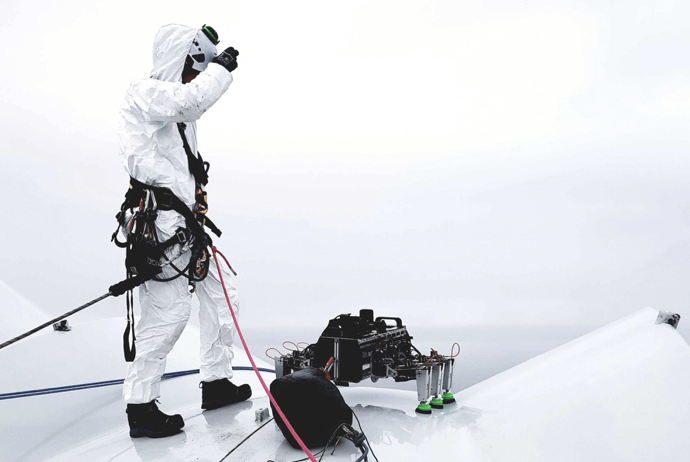The U.K. has achieved the world’s first robotic blade walk on an offshore wind turbine, thanks to BladeBUG and the Offshore Renewable Energy (ORE) Catapult.
The six-legged inspect-and-repair robot repeatedly scaled blades at ORE Catapult’s 7 MW Levenmouth Demonstration turbine off the coast of Fife.
BladeBUG represents a 30% cost reduction on current blade inspection techniques, which are conducted by rope-access technicians, with a measurable knock-on effect to the levelized cost of energy. For next-generation turbines, ORE Catapult predicts the cost savings could reach as much as 50%. These costs have traditionally been one of the primary areas of concern for offshore operators, as sea conditions and faster tip speeds can lead to significant blade damage over time.
The robot is being developed under a £1 million collaboration project between BladeBUG and ORE Catapult, partly funded by Innovate U.K. By the project’s end next year, BladeBUG will be capable of inspecting blade surfaces for emergent cracks and imperfections, transmitting data on their condition back to shore.
“It has a clear potential for cutting costs, reducing human offshore deployment and increasing blade lifetimes,” says Chris Cieslak, CEO of BladeBUG. “But, we had yet to see how the robot would perform on a real turbine out at sea. I consider BladeBUG’s first walk at Levenmouth as a historic milestone in the industry’s evolution. Robotics are here to stay, and they will be an essential ingredient to operating ever-expanding wind farms, deeper-water sites and faster, bigger turbines in the coming years.”
BladeBUG had previously demonstrated its abilities on blade sections and the vertical training tower at ORE Catapult’s National Renewable Energy Centre in Blyth. The blade walk at an operational offshore wind turbine has now proven that the robot can conduct lengthy deployments in real-world conditions.
During the demonstration, the robot walked 50 meters on a vertically positioned blade on the Levenmouth turbine (a length of 84 meters with the tip reaching 195 meters above the sea when upright). The final MIMRee system technology trials are set to take place in mid-2021.




